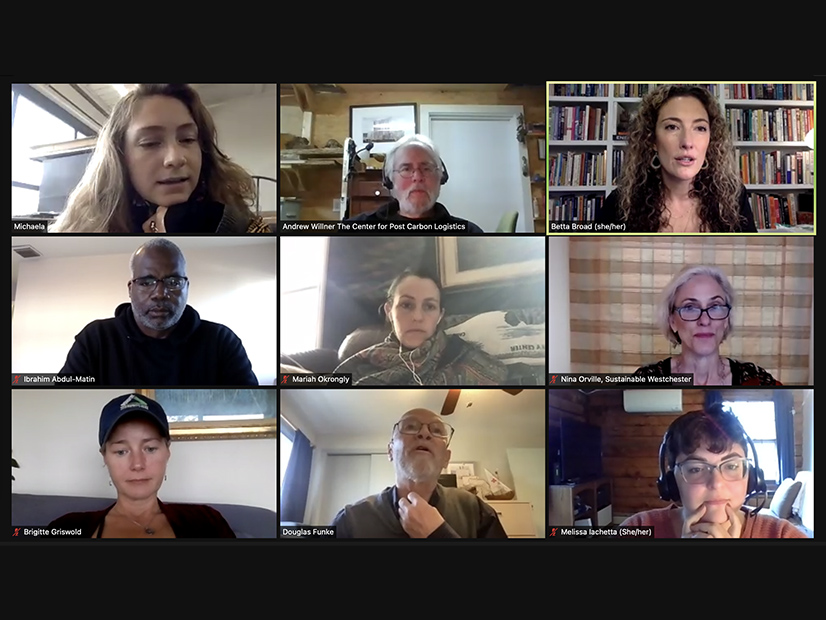From Buffalo to Long Island, New York is trying to reduce transportation-related pollution not only by promoting electric vehicles, but by increasing the availability of public buses and light rail, developing greenways to make bicycling safer and easier.
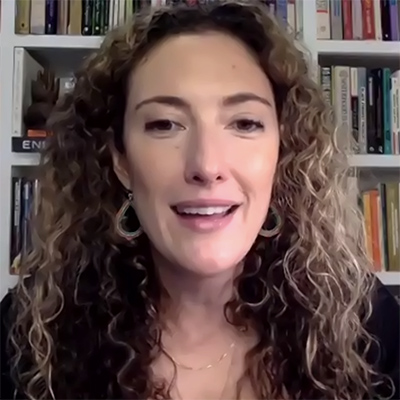 Betta Broad, NYCP | NYCP
Betta Broad, NYCP | NYCP“The regional Transportation and Climate Initiative Program (TCI-P) had some setbacks, but we’re still committed to the program and want people to take action by supporting it and signing our petition to send a message to Gov. [Kathy] Hochul,” Betta Broad, director of New Yorkers for Clean Power (NYCP) and a member of the state’s Climate Action Council, said Wednesday as she hosted a “teach-in” on clean transportation on behalf of NY for TCI.
Connecticut Gov. Ned Lamont, Massachusetts Gov. Charlie Baker and Rhode Island Gov. Dan McKee separately announced last month that their states would back away from the program, which they and D.C. in December 2020 had signed a memorandum of understanding to join. (See Conn. Environmental Advocates Urge Continued Commitment to TCI-P.)
“We hope to see TCI included in the Climate Action Council’s plan that will also be circulating across the state next year, with lots of opportunities for public comment,” Broad said.
EVs vs. Mass Transit?
Meanwhile, passage of the bipartisan infrastructure bill in Washington means many billions of dollars coming to New York for transportation initiatives, she said.
Douglas Funke, president of the city’s Citizens for Regional Transit, said investing in more infrastructure to accommodate individual vehicles is not the ideal solution.
“We really have to fix the car problem, and public transit in our opinion is the way to do that,” Funke said.
He noted that Buffalo had a plan for a 42-mile light rail network but only built 6 miles. The city is building another 6, which is encouraging, he said, but it’s still far from the goal.
Changing all vehicles to electric doesn’t work in urban areas like Buffalo or New York City, Funke said, “because you still have the congestion, still have all the parking, all the roads. Every ton of concrete generates a ton of CO2, so if you have to keep building parking lots and roads and repairing them for all the cars, it just creates more pollution.”
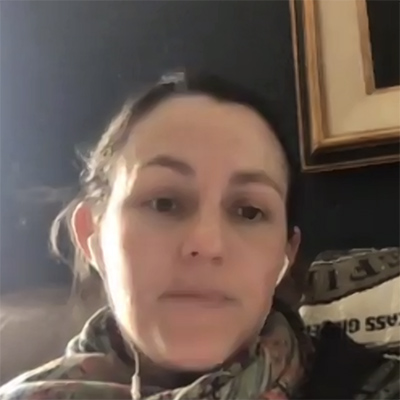 Mariah Okrongly, Bedford 2030 | NYCP
Mariah Okrongly, Bedford 2030 | NYCPIn suburban Westchester County, however, EVs make more sense, said Mariah Okrongly, program manager at Bedford 2030, which is working to get local school districts to buy electric school buses.
Her organization expects at least one of the school districts in the next bond proposition to include an electric school bus, but it has been difficult selling the novel concept of using the buses to feed the grid with the vehicle-to-grid technology, Okrongly said.
“So it definitely is a long a long-haul initiative, but worthwhile, and with the new infrastructure bill and all the funds associated with that, there’s going to be a bigger push to move forward with this, so I think it’s a prime time if you’re considering this to begin the process,” Okrongly said.
Another town, Peekskill, is hosting a pilot on-demand, fully electric transit program that links with Westchester’s Bee-Line bus network, said Nina Orville of Sustainable Westchester.
The on-demand fleet also provides the opportunity to build out the charging infrastructure in Peekskill, where most households have either one car or none, Orville said.
“We still need to do work across the state to address tariffs for charging vehicles, which is particularly important for people who live in multifamily housing and have to use charging infrastructure that might be billed different rates than if they had their own charging equipment,” she said.
On-demand EVs “would be swell” in southeast Queens, where most commuters still have to take a bus to a Long Island Rail Road station and then to the New York City Subway to get to work, said Jean Sassine, a member of New York Community for Change.
“We just need more buses, more electric buses because … most of the pollution is coming from cars,” Sassine said. “Queens is built with the idea of that old sprawl mentality, so we’re either driving or waiting for buses.”
Greenways Connect People
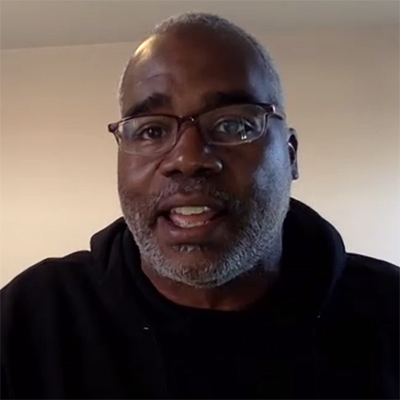 Ibrahim Abdul-Matin, Green Squash | NYCP
Ibrahim Abdul-Matin, Green Squash | NYCPThe Brooklyn-Queens Greenway is part of a larger effort to develop dedicated biking and walking paths throughout New York City, said Ibrahim Abdul-Matin, of consultancy Green Squash, who also serves on the state’s advisory board of the Trust for Public Land.
A lot of people don’t necessarily feel safe or comfortable on the subway or they live far from where they work, Abdul-Matin said. The old purpose of greenways was to infuse residents with trees and wildlife, but now the idea is to reconnect and create a whole different type of transportation infrastructure, he said.
The Trust for Public Land has put together a slate of projects to help conserve and protect natural areas around the country, and almost every initiative had bipartisan support, he said.
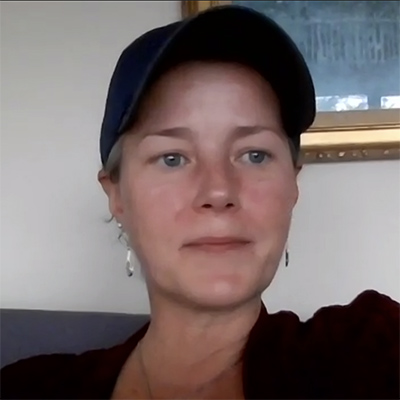 Brigitte Griswold, Groundwork Hudson Valley | NYCP
Brigitte Griswold, Groundwork Hudson Valley | NYCPCommunity volunteers in Yonkers thought they were doing trash pick-up on a series of vacant lots, but then realized the lots were the former route of an abandoned railroad known as the Putnam that used to run from New York City all the way up to Brewster before it was discontinued in the 1940s, said Brigitte Griswold, executive director of Groundwork Hudson Valley.
“A piece of the old railroad was completely forgotten: a 2.2-mile route that was a spur off the main line that ran from New York City to downtown Yonkers,” she said. “And so we got involved with thinking about how we could convert these series of vacant lots into a green bike and walking pathway.”
The Yonkers Greenway wasn’t originally conceived as a green solution, but as an answer to crime and a way to revitalize economic activity in the neighborhoods where businesses were shuttered, she said. When completed within the next two years, the greenway will be a 15-minute bike ride to Manhattan and will also connect with the 242nd St. subway stop in the Bronx.
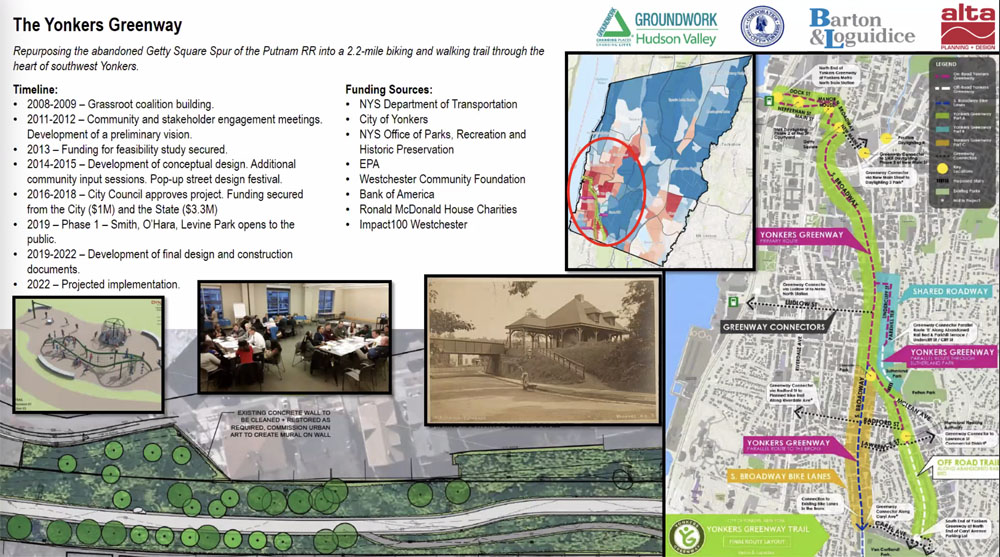 For over 12 years Sustainable Westchester has been developing the Yonkers Greenway to transform a disused railway into a green corridor to Manhattan. | NYCP
For over 12 years Sustainable Westchester has been developing the Yonkers Greenway to transform a disused railway into a green corridor to Manhattan. | NYCPMeanwhile, the Center for Post Carbon Logistics is developing solar-powered boats to carry freight up and down the Hudson River, said Andy Willner, the center’s executive director.
“The schooner Apollonia is a freight sailing vessel that carries Hudson Valley goods to and from New York City,” Willner said. “Primarily their cargo has been grains and malted barley for beer and distilled spirits, but they also had their first interaction with a cross-oceanic sailing vessel.”
